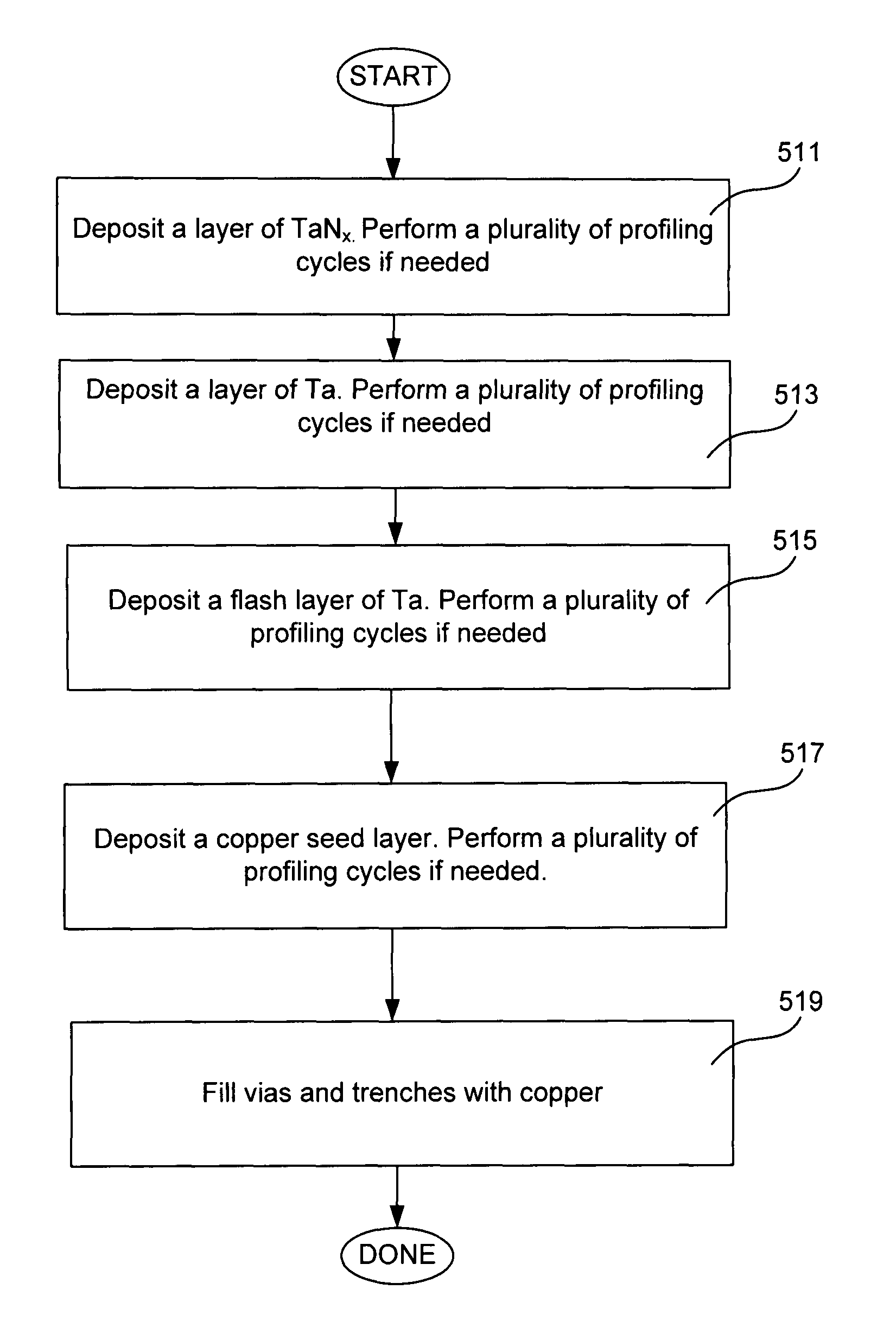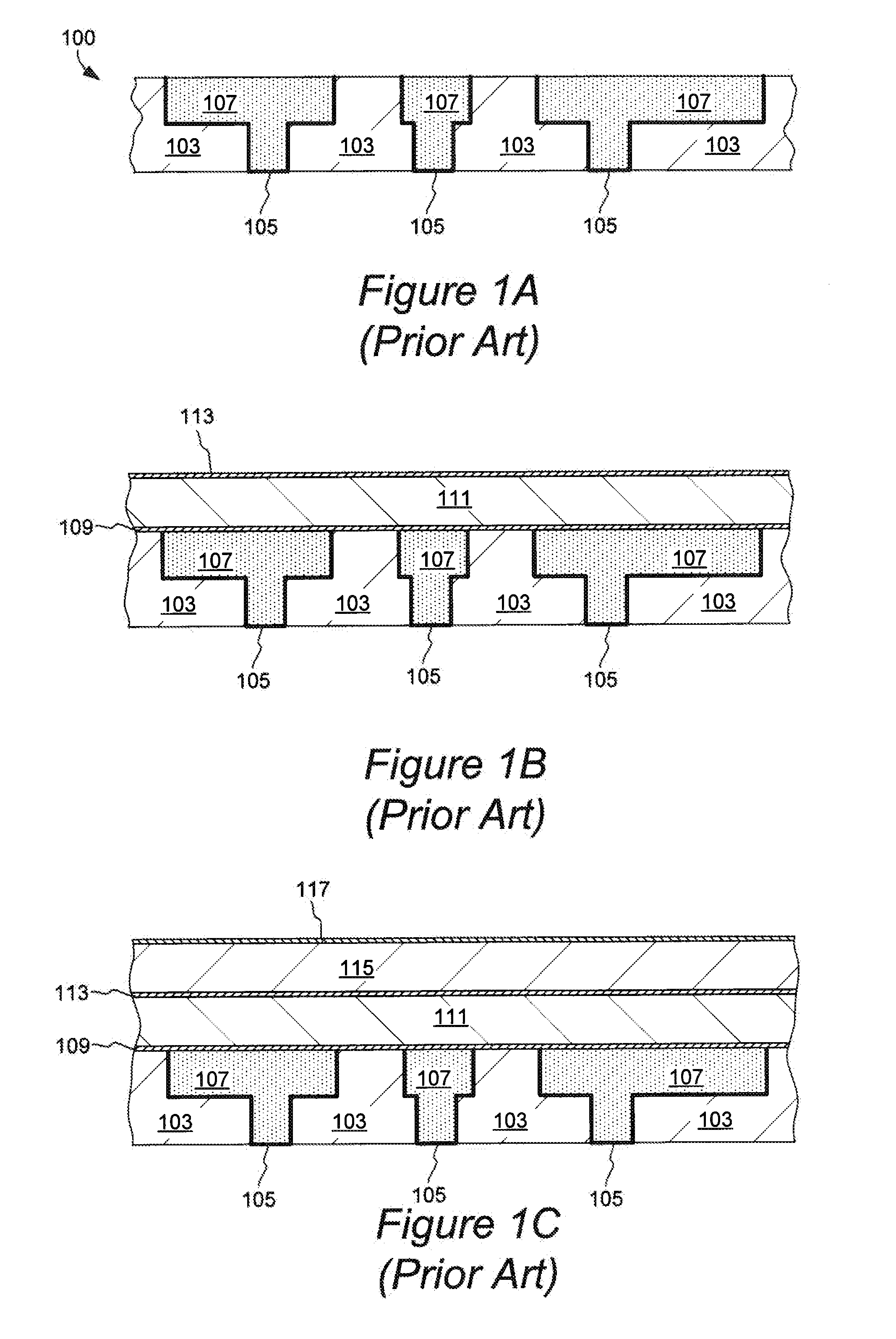Atomic layer profiling of diffusion barrier and metal seed layers
a diffusion barrier and layer profiling technology, applied in the direction of sputtering coating, vacuum evaporation coating, coating, etc., can solve the problems of easy damage to exposed dielectric materials, microtrenching damage, and more difficult to perform resputtering without exposing dielectric layers to plasma, so as to improve the shape of the feature bottom, improve the sidewall coverage of recessed features, and reduce overhang
- Summary
- Abstract
- Description
- Claims
- Application Information
AI Technical Summary
Benefits of technology
Problems solved by technology
Method used
Image
Examples
Embodiment Construction
[0031]Plasma etch-back (resputtering) of metal-containing materials on a wafer is performed using a plurality of atomic layer profiling (ALP) cycles. Each cycle includes a net etch operation and a net deposition operation. Small amounts of material are etched and deposited in each operation, resulting in a net etch-back which could be performed incrementally, often with an atomic scale control. Several benefits can be achieved with the use of this method. First, it was discovered that plasma etching that employs alternating etching and depositing operations can be used to remove metal-containing materials from the wafer surface in the presence of an exposed dielectric without causing microtrenching in a dielectric. Further, it was noted that improved overhang clipping can be achieved with this method compared to a one-step resputtering. Also, profiling cycles described herein can be used to improve the shapes of recessed features, making them more rounded at the bottom. Provided met...
PUM
| Property | Measurement | Unit |
|---|---|---|
| widths | aaaaa | aaaaa |
| widths | aaaaa | aaaaa |
| RF power | aaaaa | aaaaa |
Abstract
Description
Claims
Application Information
 Login to View More
Login to View More - R&D
- Intellectual Property
- Life Sciences
- Materials
- Tech Scout
- Unparalleled Data Quality
- Higher Quality Content
- 60% Fewer Hallucinations
Browse by: Latest US Patents, China's latest patents, Technical Efficacy Thesaurus, Application Domain, Technology Topic, Popular Technical Reports.
© 2025 PatSnap. All rights reserved.Legal|Privacy policy|Modern Slavery Act Transparency Statement|Sitemap|About US| Contact US: help@patsnap.com



